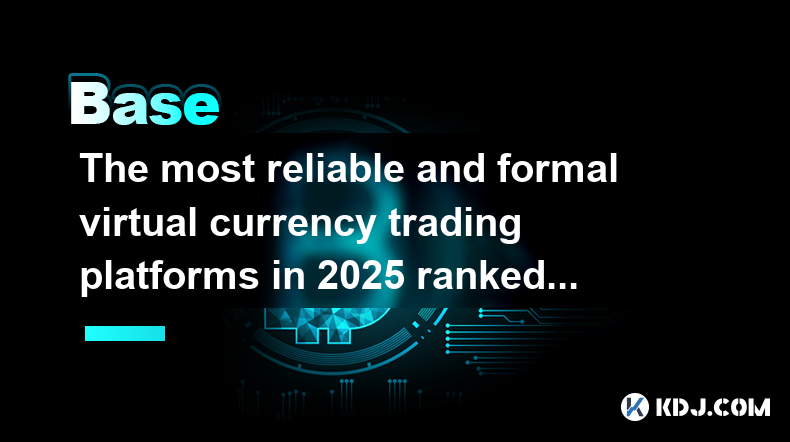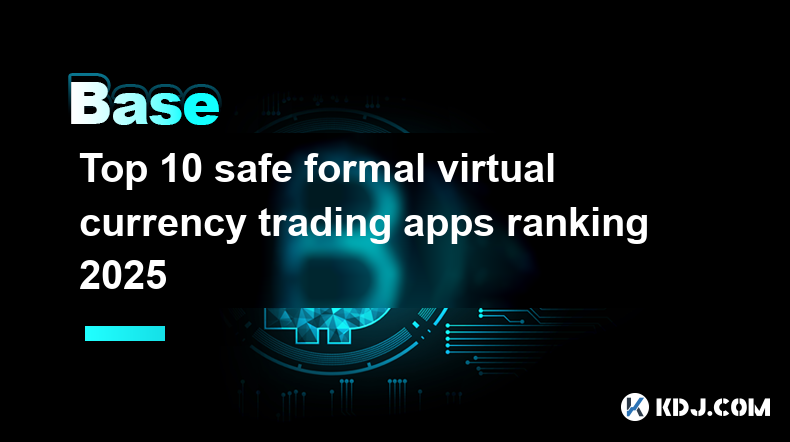-
 Bitcoin
Bitcoin $94,149.1552
3.21% -
 Ethereum
Ethereum $1,808.1176
6.46% -
 Tether USDt
Tether USDt $1.0001
-0.05% -
 XRP
XRP $2.2484
4.33% -
 BNB
BNB $608.3175
-0.16% -
 Solana
Solana $152.2432
4.96% -
 USDC
USDC $0.9998
-0.01% -
 Dogecoin
Dogecoin $0.1813
5.82% -
 Cardano
Cardano $0.7094
8.27% -
 TRON
TRON $0.2457
-0.45% -
 Chainlink
Chainlink $15.0257
8.69% -
 Sui
Sui $3.0274
24.46% -
 Avalanche
Avalanche $22.5710
4.02% -
 UNUS SED LEO
UNUS SED LEO $9.0748
1.02% -
 Stellar
Stellar $0.2704
4.32% -
 Shiba Inu
Shiba Inu $0.0...01369
3.71% -
 Toncoin
Toncoin $3.2078
6.98% -
 Hedera
Hedera $0.1837
3.68% -
 Bitcoin Cash
Bitcoin Cash $363.3301
1.66% -
 Polkadot
Polkadot $4.1419
6.17% -
 Litecoin
Litecoin $84.1417
1.43% -
 Hyperliquid
Hyperliquid $18.7231
0.62% -
 Dai
Dai $1.0000
0.00% -
 Bitget Token
Bitget Token $4.5126
-0.19% -
 Ethena USDe
Ethena USDe $0.9993
-0.05% -
 Pi
Pi $0.6624
3.61% -
 Monero
Monero $229.8216
3.31% -
 Uniswap
Uniswap $6.0785
8.19% -
 Pepe
Pepe $0.0...09001
6.75% -
 Aptos
Aptos $5.3789
5.41%
What does PoW stand for in the Bitcoin white paper
PoW, introduced by Satoshi Nakamoto in Bitcoin, secures the network by requiring miners to solve puzzles, but its high energy use raises environmental concerns.
Apr 20, 2025 at 11:35 pm

In the realm of cryptocurrencies, the term PoW, as mentioned in the Bitcoin white paper, stands for Proof of Work. This concept is fundamental to the operation of the Bitcoin network and many other cryptocurrencies that followed its model. Proof of Work is a consensus mechanism that allows the decentralized network to agree on the state of the blockchain and validate transactions securely.
The Origin and Purpose of Proof of Work
The concept of Proof of Work was not originally designed for cryptocurrencies. It was first proposed by Cynthia Dwork and Moni Naor in 1993 as a means to combat email spam and denial-of-service attacks. However, Satoshi Nakamoto, the pseudonymous creator of Bitcoin, adapted this concept to solve the double-spending problem in a decentralized currency system. In the Bitcoin white paper, Nakamoto introduced PoW as a way to achieve consensus among network participants without needing a central authority.
How Proof of Work Works in Bitcoin
In the Bitcoin network, miners compete to solve a complex mathematical puzzle. The first miner to solve the puzzle gets the right to add a new block of transactions to the blockchain and is rewarded with newly minted bitcoins and transaction fees. The puzzle involves finding a hash that meets a specific difficulty target, which is adjusted every 2016 blocks to maintain a consistent block time of approximately 10 minutes.
- Hashing: Miners take the data from the block header and run it through a cryptographic hash function, such as SHA-256. The result is a fixed-size string of characters that represents the data in a unique way.
- Difficulty Target: The difficulty target is a number that the hash must be less than or equal to. It is adjusted to ensure that the network takes roughly 10 minutes to find a valid hash for each block.
- Nonce: Miners increment a number called the nonce (number used once) and rehash the block header until they find a hash that meets the difficulty target.
The Role of Proof of Work in Security
Proof of Work plays a crucial role in securing the Bitcoin network. By requiring miners to expend computational resources to validate transactions and add them to the blockchain, PoW makes it economically unfeasible for malicious actors to alter the blockchain. The energy and computational power required to solve the puzzle serve as a deterrent against attacks, as an attacker would need to control more than 50% of the network's mining power to successfully alter the blockchain, a scenario known as a 51% attack.
Energy Consumption and Environmental Impact
One of the most debated aspects of Proof of Work is its significant energy consumption. Bitcoin mining requires vast amounts of electricity to power the computers that solve the mathematical puzzles. This has led to concerns about the environmental impact of Bitcoin and other PoW-based cryptocurrencies. Critics argue that the energy consumption is unsustainable and contributes to carbon emissions. Proponents, however, point out that the energy used in mining can come from renewable sources and that the security provided by PoW justifies the energy expenditure.
Alternatives to Proof of Work
Due to the energy concerns associated with PoW, alternative consensus mechanisms have been developed. Proof of Stake (PoS) is one such alternative, which is used by cryptocurrencies like Ethereum 2.0. In PoS, validators are chosen to create new blocks based on the number of coins they hold and are willing to "stake" as collateral, rather than on their computational power. This approach is considered more energy-efficient but has its own set of challenges and security considerations.
The Economic Incentives of Proof of Work
Proof of Work also creates economic incentives that drive the security and decentralization of the Bitcoin network. Miners are rewarded with bitcoins for their efforts, which encourages them to continue validating transactions and maintaining the network. This reward system also helps to distribute new bitcoins into circulation in a controlled manner. Additionally, the competition among miners to solve the puzzle leads to a more decentralized network, as it is difficult for any single entity to control a majority of the mining power.
The Impact of Proof of Work on Transaction Fees
Transaction fees in the Bitcoin network are influenced by the Proof of Work mechanism. Miners prioritize transactions with higher fees, as these are more profitable to include in the blocks they mine. This creates a market for transaction fees, where users can pay more to have their transactions processed faster. The fee market helps to manage the limited space in each block and ensures that the network can handle a high volume of transactions efficiently.
Frequently Asked Questions
Q: How does Proof of Work prevent double-spending in Bitcoin?
A: Proof of Work prevents double-spending by ensuring that once a transaction is included in a block and added to the blockchain, it is extremely difficult to alter. The energy and computational power required to change a block and all subsequent blocks make it economically unfeasible for an attacker to double-spend coins.
Q: Can Proof of Work be used in other applications outside of cryptocurrencies?
A: Yes, Proof of Work can be used in various applications beyond cryptocurrencies. It has been used in systems to prevent spam emails, protect against denial-of-service attacks, and even in scientific computing to distribute tasks across a network of computers.
Q: How does the difficulty adjustment in Bitcoin's Proof of Work work?
A: The difficulty adjustment in Bitcoin's Proof of Work is designed to maintain a consistent block time of approximately 10 minutes. Every 2016 blocks, the network calculates the average time it took to mine these blocks. If the average time is less than 10 minutes, the difficulty is increased; if it is more than 10 minutes, the difficulty is decreased. This ensures that the network adapts to changes in total mining power.
Q: What are the main criticisms of Proof of Work?
A: The main criticisms of Proof of Work include its high energy consumption, which leads to environmental concerns, and the potential for centralization of mining power in the hands of a few large mining pools. Critics also argue that the computational resources used in PoW could be better utilized for other purposes.
Disclaimer:info@kdj.com
The information provided is not trading advice. kdj.com does not assume any responsibility for any investments made based on the information provided in this article. Cryptocurrencies are highly volatile and it is highly recommended that you invest with caution after thorough research!
If you believe that the content used on this website infringes your copyright, please contact us immediately (info@kdj.com) and we will delete it promptly.
- Bitcoin (BTC) is Back Above $90,000 – But Meme Tokens and AI Coins Are Outperforming It
- 2025-04-24 03:00:13
- Bitcoin (BTC) Faces Critical Test: Will the Yearly Open Flip from Support to Resistance?
- 2025-04-24 03:00:13
- A research team has developed an innovative single-step laser printing technique to accelerate the manufacturing of lithium-sulfur batteries.
- 2025-04-24 02:55:13
- Is It Too Late to Get Rich Off Meme Coins? Troller Cat ($TCAT) Might Be Your Ticket
- 2025-04-24 02:55:13
- Dragoin Turns Telegram Into a Battleground for Profit
- 2025-04-24 02:50:13
- Bitcoin Dominance (BTC.D) Approaches Critical Point, Signalling the Start of Altcoin Season
- 2025-04-24 02:50:13
Related knowledge

Which virtual currency trading platform is better in 2025? A safe and easy-to-use cryptocurrency platform inventory
Apr 23,2025 at 02:28pm
Recommended trustworthy cryptocurrency trading platforms in 2025 1. Binance As the world's leading cryptocurrency trading platform, Binance is popular for its fast transaction processing capabilities and diverse trading pairs. Binance not only supports mainstream cryptocurrency trading, but also provides advanced trading products such as futures and...

What are the currency exchange apps? The top ten best virtual currency trading platforms in 2025
Apr 23,2025 at 09:56pm
Top 10 Most Popular Virtual Currency Trading Platforms in 2025 1. Binance As one of the world's leading cryptocurrency trading platforms, Binance is leading the market due to its huge trading volume and extensive user base. Binance supports trading pairs of more than 500 cryptocurrencies, and users can conduct various financial activities such as sp...

The most reliable and formal virtual currency trading platforms in 2025 ranked in the top 10
Apr 23,2025 at 05:29pm
Top 10 Most Trusted Virtual Currency Trading Platforms in 2025 1. Binance Binance is the world's premier cryptocurrency trading platform, known for its huge trading volume and abundant trading pairs. Binance provides services covering spot trading, futures trading, leveraged trading and staking. In addition, Binance has launched its own decentralize...

Top 10 safe formal virtual currency trading apps ranking 2025
Apr 23,2025 at 01:35pm
Top 10 safe formal virtual currency trading applications in 2025 1.Binance As the world's leading cryptocurrency trading platform, Binance is known for its extensive trading pairs and efficient trading services. Its security and user experience are highly respected in the industry. Binance adopts multi-level security measures, including separation o...

What are the top ten virtual currency trading apps? Top 10 latest digital currency exchange rankings in 2025
Apr 23,2025 at 04:29pm
Top 10 latest digital currency exchange rankings in 2025 1. Binance As one of the world's leading cryptocurrency trading platforms, Binance is known for its efficient trading system and diverse trading pairs. Binance offers a wide range of options from Bitcoin, Ethereum to numerous other alternatives. In addition, Binance also provides futures tradi...

Introduction to the top ten spot virtual currency trading platforms in the world in 2025
Apr 24,2025 at 01:28am
Ranking of the top ten spot virtual currency trading platforms in the world in 2025 1. Binance Binance ranks first among the world's largest cryptocurrency trading platforms, thanks to its huge trading volume and extensive user base. Founded in 2017, Binance has quickly grown into a leader in the industry. Its platform supports over 500 cryptocurren...

Which virtual currency trading platform is better in 2025? A safe and easy-to-use cryptocurrency platform inventory
Apr 23,2025 at 02:28pm
Recommended trustworthy cryptocurrency trading platforms in 2025 1. Binance As the world's leading cryptocurrency trading platform, Binance is popular for its fast transaction processing capabilities and diverse trading pairs. Binance not only supports mainstream cryptocurrency trading, but also provides advanced trading products such as futures and...

What are the currency exchange apps? The top ten best virtual currency trading platforms in 2025
Apr 23,2025 at 09:56pm
Top 10 Most Popular Virtual Currency Trading Platforms in 2025 1. Binance As one of the world's leading cryptocurrency trading platforms, Binance is leading the market due to its huge trading volume and extensive user base. Binance supports trading pairs of more than 500 cryptocurrencies, and users can conduct various financial activities such as sp...

The most reliable and formal virtual currency trading platforms in 2025 ranked in the top 10
Apr 23,2025 at 05:29pm
Top 10 Most Trusted Virtual Currency Trading Platforms in 2025 1. Binance Binance is the world's premier cryptocurrency trading platform, known for its huge trading volume and abundant trading pairs. Binance provides services covering spot trading, futures trading, leveraged trading and staking. In addition, Binance has launched its own decentralize...

Top 10 safe formal virtual currency trading apps ranking 2025
Apr 23,2025 at 01:35pm
Top 10 safe formal virtual currency trading applications in 2025 1.Binance As the world's leading cryptocurrency trading platform, Binance is known for its extensive trading pairs and efficient trading services. Its security and user experience are highly respected in the industry. Binance adopts multi-level security measures, including separation o...

What are the top ten virtual currency trading apps? Top 10 latest digital currency exchange rankings in 2025
Apr 23,2025 at 04:29pm
Top 10 latest digital currency exchange rankings in 2025 1. Binance As one of the world's leading cryptocurrency trading platforms, Binance is known for its efficient trading system and diverse trading pairs. Binance offers a wide range of options from Bitcoin, Ethereum to numerous other alternatives. In addition, Binance also provides futures tradi...

Introduction to the top ten spot virtual currency trading platforms in the world in 2025
Apr 24,2025 at 01:28am
Ranking of the top ten spot virtual currency trading platforms in the world in 2025 1. Binance Binance ranks first among the world's largest cryptocurrency trading platforms, thanks to its huge trading volume and extensive user base. Founded in 2017, Binance has quickly grown into a leader in the industry. Its platform supports over 500 cryptocurren...
See all articles
























































































